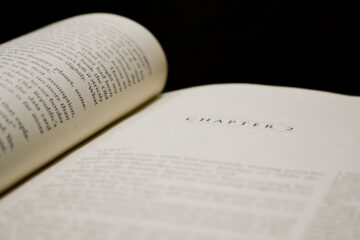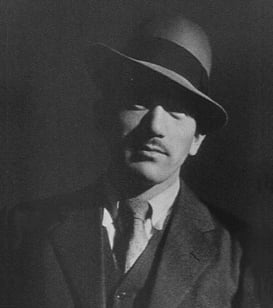From Phys.Org:
 In a scientific breakthrough that aids our understanding of the internal wiring of immune cells, researchers at Monash University in Australia have cracked the code behind Ikaros, an essential protein for immune cell development and protection against pathogens and cancer. This disruptive research, led by the eminent Professor Nicholas Huntington of Monash University’s Biomedicine Discovery Institute, is poised to reshape our comprehension of gene control networks and its impact on everything from eye color to cancer susceptibility and design of novel therapies. The study, published in Nature Immunology, promises pivotal insights into the mechanisms safeguarding us against infections and cancers.
In a scientific breakthrough that aids our understanding of the internal wiring of immune cells, researchers at Monash University in Australia have cracked the code behind Ikaros, an essential protein for immune cell development and protection against pathogens and cancer. This disruptive research, led by the eminent Professor Nicholas Huntington of Monash University’s Biomedicine Discovery Institute, is poised to reshape our comprehension of gene control networks and its impact on everything from eye color to cancer susceptibility and design of novel therapies. The study, published in Nature Immunology, promises pivotal insights into the mechanisms safeguarding us against infections and cancers.
When the transcription factor Ikaros/Ikzf1 was deliberately obstructed, whether in preclinical models or humans, the once-mighty activity of natural killer (NK) cells, our immune system’s frontline warriors, plummeted. Loss of this transcription factor in NK cells resulted in widespread dysregulation of NK cell development and function, preventing their ability to recognize and kill virus-infected cells and clear metastatic tumor cells from circulation.
More here.

 It is hard to see chapters, such is their banal inevitability. The chapter possesses the trick of vanishing while in the act of serving its various purposes. In 1919, writing in the Nouvelle revue française, Marcel Proust famously insisted that the most beautiful moment in Gustave Flaubert’s
It is hard to see chapters, such is their banal inevitability. The chapter possesses the trick of vanishing while in the act of serving its various purposes. In 1919, writing in the Nouvelle revue française, Marcel Proust famously insisted that the most beautiful moment in Gustave Flaubert’s  Money can’t buy you love, but in 2023, what it can buy you is AI-assisted time travel. Now in his eighties, Paul McCartney increasingly resembles one of those lost characters in a 1960s Alain Resnais or Chris Marker film, repeatedly thrown back into the past to re-experience a traumatic event; or perhaps the protagonist of J.G. Ballard’s Atrocity Exhibition, constantly re-enacting the assassinations of famous people so that they might ‘make sense’. As a piece of music, the ‘new’ ‘last’ ‘Beatles’ single, ‘Now and Then’, is of very little interest, but as a phenomenon, it is highly symptomatic. McCartney’s project of going back in time to the 1960s and 1970s and using advanced software to scrub the historical fact of the Beatles’ shabby, acrimonious end and replace it with a series of warm, friendly fakes is proof of another of Ballard’s claims – that the science-fictional future, when it arrives, will turn out to be boring.
Money can’t buy you love, but in 2023, what it can buy you is AI-assisted time travel. Now in his eighties, Paul McCartney increasingly resembles one of those lost characters in a 1960s Alain Resnais or Chris Marker film, repeatedly thrown back into the past to re-experience a traumatic event; or perhaps the protagonist of J.G. Ballard’s Atrocity Exhibition, constantly re-enacting the assassinations of famous people so that they might ‘make sense’. As a piece of music, the ‘new’ ‘last’ ‘Beatles’ single, ‘Now and Then’, is of very little interest, but as a phenomenon, it is highly symptomatic. McCartney’s project of going back in time to the 1960s and 1970s and using advanced software to scrub the historical fact of the Beatles’ shabby, acrimonious end and replace it with a series of warm, friendly fakes is proof of another of Ballard’s claims – that the science-fictional future, when it arrives, will turn out to be boring. Richard Dawkins: I believe you have the ability to write computer programs. In theory, I suppose this might give you the ability to modify your own software. I’m guessing you don’t do this, but is it a theoretical possibility?
Richard Dawkins: I believe you have the ability to write computer programs. In theory, I suppose this might give you the ability to modify your own software. I’m guessing you don’t do this, but is it a theoretical possibility? “The great climate migration has begun.” “Climate crisis could displace 1.2bn people by 2050.” “Migration will soon be the biggest climate challenge of our time.”
“The great climate migration has begun.” “Climate crisis could displace 1.2bn people by 2050.” “Migration will soon be the biggest climate challenge of our time.” SCHWABSKY: Why a telegram?
SCHWABSKY: Why a telegram? Nicki Minaj
Nicki Minaj Despite its initially disappointing reception in 1851, Herman Melville’s “Moby-Dick” eventually earned a place in the American literary canon, leading to a tidal wave of biographies, doctoral theses, and spinoffs. The latest is Tara Karr Roberts’ beautifully conceived debut novel, “Wild and Distant Seas,” which deserves a prime spot on the shelf of Melvilleana.
Despite its initially disappointing reception in 1851, Herman Melville’s “Moby-Dick” eventually earned a place in the American literary canon, leading to a tidal wave of biographies, doctoral theses, and spinoffs. The latest is Tara Karr Roberts’ beautifully conceived debut novel, “Wild and Distant Seas,” which deserves a prime spot on the shelf of Melvilleana. The bacterium Acinetobacter baumannii is a portrait of resilience. The microorganism causes a range of infections, and its ability to survive desiccation means it can persist for weeks on hospital air vents, computer keyboards and human skin. Its metabolic and genetic flexibility have allowed it to become resistant to the few antibiotics that can make it through its two protective cell membranes. Antibiotic-resistant microbes kill more than one million people each year. The global threat posed by A. baumannii has put the microbe high on the list of priority pathogens drawn up by the World Health Organization (WHO).
The bacterium Acinetobacter baumannii is a portrait of resilience. The microorganism causes a range of infections, and its ability to survive desiccation means it can persist for weeks on hospital air vents, computer keyboards and human skin. Its metabolic and genetic flexibility have allowed it to become resistant to the few antibiotics that can make it through its two protective cell membranes. Antibiotic-resistant microbes kill more than one million people each year. The global threat posed by A. baumannii has put the microbe high on the list of priority pathogens drawn up by the World Health Organization (WHO). Texas Governor
Texas Governor  Peter Hegemann
Peter Hegemann B
B The development of his body of work is “completely collapsed and over-arching”, Tillmans said. To map out a logical timeline would be reductive. Though there are issues that recur, such as “the politics of representation”, women’s rights and gay rights. Tillmans came out as gay when he was 16, the summer Bronski Beat’s “Smalltown Boy” – which he describes as “the first fully out gay pop song” – was in the charts. “I feel a great sense of gratitude for having been born when and where I was,” he said, though his life has been touched by tragedy: his boyfriend, the painter Jochen Klein, died of Aids-related illnesses in 1997. Tillmans lives with HIV. He does not tend to make work specifically about the disease –
The development of his body of work is “completely collapsed and over-arching”, Tillmans said. To map out a logical timeline would be reductive. Though there are issues that recur, such as “the politics of representation”, women’s rights and gay rights. Tillmans came out as gay when he was 16, the summer Bronski Beat’s “Smalltown Boy” – which he describes as “the first fully out gay pop song” – was in the charts. “I feel a great sense of gratitude for having been born when and where I was,” he said, though his life has been touched by tragedy: his boyfriend, the painter Jochen Klein, died of Aids-related illnesses in 1997. Tillmans lives with HIV. He does not tend to make work specifically about the disease –  In 2023 the escalation of violence around the world was horrifying. As the
In 2023 the escalation of violence around the world was horrifying. As the